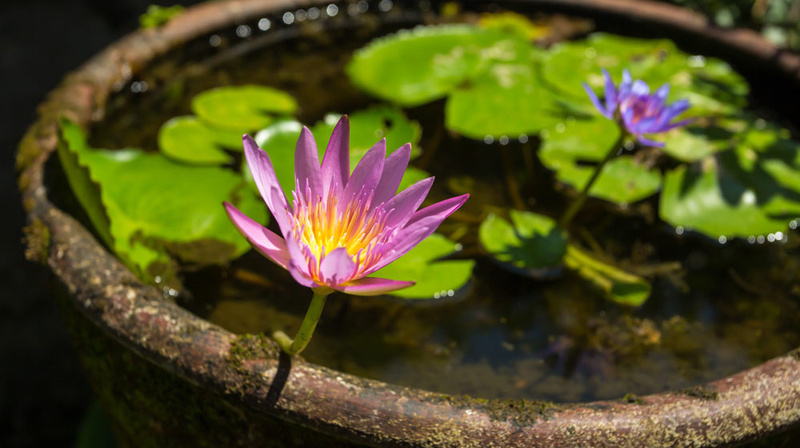
Creating and Installing a Water Garden
Now may be the perfect time for a final quarantine home project, like installing a water garden. In-ground and above-ground options and a short list of necessary materials make this a project that is sure to be a success, even for beginners.
Given the current situation with the coronavirus pandemic, most Floridians have spent considerably more time at home this spring. And even though the state is slowly reopening, many folks are choosing to venture out slowly. With more openings coming soon, now may be the perfect time to squeeze in a last landscaping project, such as creating a water garden.
While we don’t recommend launching a giant undertaking (you may still have trouble getting a professional out to help if you get in over your head), you can certainly install a respectably-sized water garden by yourself.
What Makes a Water Garden
Water gardens come in all shapes and sizes. They can be created in barrels or other containers above the ground, or as pools in the ground. Water gardens may have a fountain or pump circulating the water, but neither of these is a necessary feature. Aquatic plants typically prefer still water.
Creating the Water Garden
Creating an above-ground water garden can be as simple as finding a large pot and filling it with the correct elements. For an in-ground water garden, dig a hole that’s 18-24 inches deep and as wide as you want. Set a pond liner inside the hole. Local codes vary; make sure your hole doesn’t meet the legal criteria for a swimming pool, which would require a permit.
Once you have your hole or container, all you need are aquatic plants, water snails, and dechlorinated water.
After pouring in the water, submerge your individually potted plants. Clay soil or regular soil are both suitable for aquatic plants, but make sure to cover it with rocks and plug any holes on the underside of the pots. Introduce the water snails, and you’re done. It’s that easy!
Best Water Garden Plants
Aquatic plants come in three varieties, all of which should be a part of a water garden: submerged, floating, and emergent.
- As the name suggests, submerged plants only grow underwater. They serve the important functions of controlling algae growth, supplying the water with oxygen, clarifying the water, and improving its quality.
- Floating plants rest on the surface. They help control water temperature by providing shade, and they manage algae growth. Water lilies may be the most well-known floating water garden plant.
- Finally, emergent plants grow under the water and reach above its surface. Like submerged and floating plants, emergent plants help control algae. They will also stabilize sediment on the bottom of your garden.
Popular water garden plants include parrot’s feather, canna, water lily, water poppy, yellow snowflake, and water hawthorn. Visit a local plant nursery in person or online for other plant suggestions. The greatest selection can usually be found between the end of spring through late summer. Check with friends too–they may have an extra plant or two to get you started!
Mosquito Control
Any body of water in Florida is a potential home for mosquitoes. You can mitigate this threat in several ways:
- install a small pump to keep water circulating
- use gambusia fish, which feed on mosquito larvae
- overfill still water gardens so mosquito larvae are washed out
Water gardens add an exotic touch and are simple enough even for a beginner. If your property needs a little something extra, take the plunge and try a water garden!